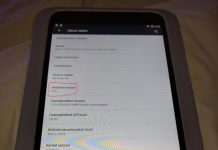The latest numbers on the Android Developers Dashboards show the more recent versions of Google’s flagship OS still gaining ground on earlier iterations, but the whole picture has now been put into a new and different context with the announcement of Android L, the latest, greatest, and as yet, most nameless. Android L is different because it is already out in a developer preview, which reportedly has already been ported to Nexus 4 phones and other devices, and is supposed to herald a new era of faster and more uniform upgrades to installed Android OS versions.
One part of the Android L plan is to “create a consistent experience across mobile and the web with material design, the new Google-wide standard.” Allied to this is the statement by SVP Sundar Pichai at the Google I/O keynote: “We worked together – Android, Chrome and across all of Google – to craft one consistent vision for mobile, desktop and beyond.” That extends to wearables and new platforms like Android TV and Android Auto. More rigid terms on UI modification and manufacturer personalization also will lock Android down more firmly. Google now has a far better stake in rolling out an uniform experience across all of its platforms, and upgrading it regularly as quickly as possible, and is moving to ensure this happens.
So the regular updates on adoption of the latest Android OS variants could soon be a thing of the past. But for those still following, the July figures show Kit Kat up to almost 18 percent of all users accessing the Google Play Store, the various versions of Jelly Bean aggregating to 56.5 percent in total, and Ice Cream Sandwich still at 11.4 percent. The earlier 2.x versions of Gingerbread and Froyo together account for only 14.2 percent.
































